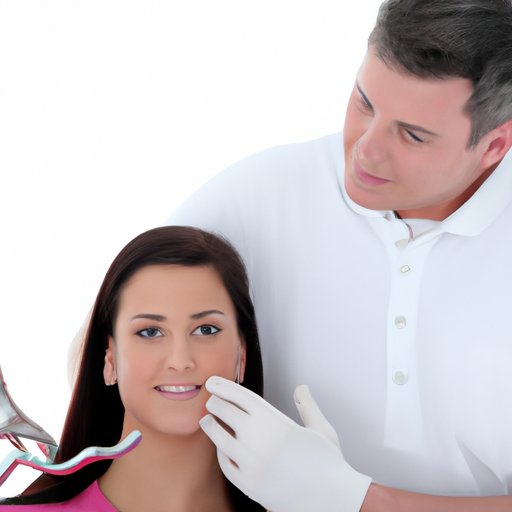
I. Introduction
If you’ve ever experienced pain or discomfort in your jaw, you may be suffering from a common condition known as TMJ, or temporomandibular joint disorder. This condition affects millions of people worldwide and can be caused by a variety of factors, from stress and teeth grinding to injury and arthritis.
The purpose of this article is to provide a comprehensive guide to understanding the causes of TMJ and how to treat it, as well as offer natural remedies and simple exercises to alleviate pain and provide relief.
II. Understanding the Causes of TMJ and How to Treat It
The temporomandibular joint is responsible for connecting the jawbone to the skull and allowing you to open and close your mouth. When this joint becomes inflamed or damaged, it can lead to pain, discomfort, and difficulty with daily activities like talking, chewing, and even sleeping.
There are many potential causes of TMJ, ranging from bad habits like teeth grinding and nail-biting to underlying medical conditions like arthritis and jaw misalignment. Treatment options include medication, physical therapy, and even surgery in severe cases.
If you suspect you may be suffering from TMJ, it’s important to seek medical advice to determine the underlying cause and develop an appropriate treatment plan for your specific needs.
III. The Do’s and Don’ts of TMJ Relief: A Comprehensive Guide
Managing TMJ pain can be challenging, especially if you’re not sure what activities or behaviors may be exacerbating your symptoms.
Fortunately, there are many things you can do to help alleviate TMJ pain and prevent future discomfort. Some helpful dos and don’ts include:
- Do maintain good posture to avoid neck and shoulder tension
- Don’t chew gum or eat foods that require excessive jaw movement
- Do practice stress-reducing techniques like meditation or yoga
- Don’t clench your jaw or grind your teeth
Lifestyle changes like eating a balanced, anti-inflammatory diet, avoiding caffeine and alcohol, and getting enough sleep can also help manage TMJ symptoms.
IV. Natural Remedies for TMJ Pain Management
In addition to lifestyle changes, natural remedies can be a helpful tool in managing TMJ pain and promoting healing.
Some popular natural remedies for TMJ include:
- Applying heat or cold therapy to the affected area to reduce inflammation and increase blood flow
- Making dietary changes to reduce inflammation and enhance joint health, such as increasing your intake of omega-3 fatty acids and antioxidants
- Incorporating relaxation techniques such as deep breathing exercises and guided meditation to reduce stress and promote relaxation
It’s important to note that while natural remedies can be a useful tool in managing TMJ pain, they are not a substitute for medical treatment if your symptoms are severe or persist over time.
V. 5 Simple Jaw Exercises to Alleviate TMJ Pain
Simple jaw exercises can also be an effective way to alleviate TMJ pain and enhance joint mobility and flexibility.
Some helpful exercises to try include:
- Jaw relaxation exercises, such as opening and closing your mouth slowly and gently or stretching your jaw from side to side
- Physical therapy exercises designed to strengthen the jaw muscles and promote healthy joint movement
- Massage therapy targeting the jaw and neck muscles to reduce pain and tension
It’s important to consult with a medical professional or physical therapist before beginning any new exercise routine and to follow their guidance on duration and frequency of exercises.
VI. Expert Advice for TMJ Pain Relief: Tips from a Chiropractor
Chiropractors can also provide helpful advice for managing TMJ pain and promoting overall joint health.
Some tips and advice from chiropractors include:
- Utilizing chiropractic adjustments to promote healthy joint movement and reduce inflammation
- Try Acupuncture sessions to relieve the symptoms of jaw pain and tension
- Educating yourself on proper jaw posture and positioning to reduce strain on the joint
Visiting a chiropractor can also give you personalized treatment options and recommendations tailored to your specific needs and symptoms.
Conclusion
TMJ pain can be a frustrating and painful condition, but there are many approaches to relief and healing.
By understanding the causes of TMJ and how to treat it, taking a comprehensive approach to managing pain and discomfort through natural remedies and exercises, and seeking expert advice from healthcare professionals like chiropractors, you can find effective relief and promote healthy joint function.
If you’re experiencing TMJ pain, don’t hesitate to seek medical attention and explore different approaches until you find what works best for you.




